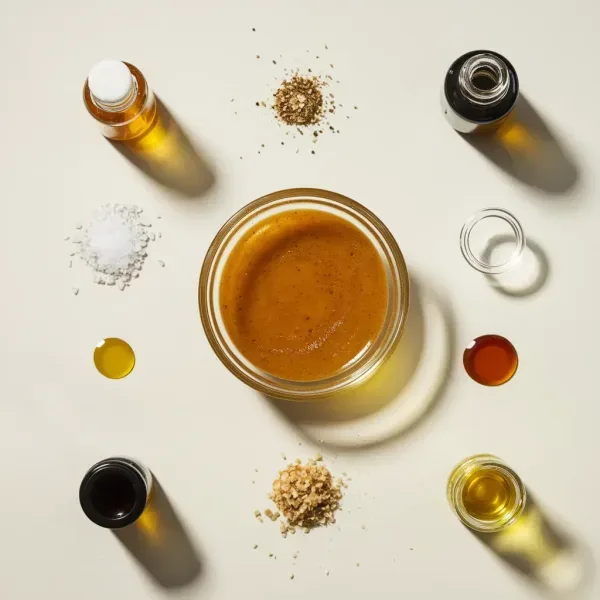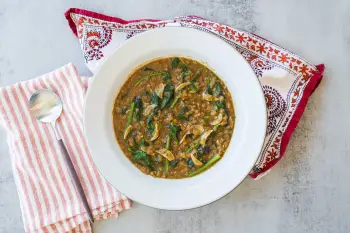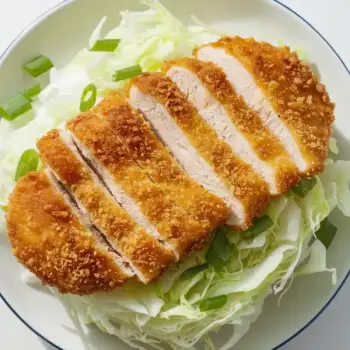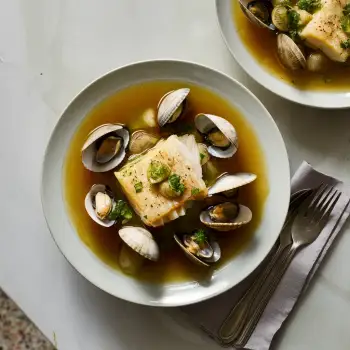
 10 minutes
10 minutesA delightful and easy-to-make vinaigrette combining the sweetness of maple syrup with the tanginess of mustard and apple cider vinegar.


tablespoons
tablespoons
tablespoons
tablespoons
Mustard Powder
teaspoons
to taste
to taste
1. Combine Ingredients
In a medium-sized bowl, whisk together the pure maple syrup, apple cider vinegar, Dijon mustard, grapeseed oil, and mustard powder. Whisk vigorously until all the ingredients are combined into a smooth and consistent mixture.
2. Season Vinaigrette
Once you have achieved a uniform blend, season the vinaigrette with salt and freshly ground pepper to taste. This step is crucial as it balances the sweetness of the maple syrup with the tanginess of the vinegar and the spice of the mustard.
3. Store Vinaigrette
Transfer the vinaigrette into an airtight container and refrigerate until you are ready to use it. Proper storage ensures that the flavors meld beautifully, making your vinaigrette even more delicious over time.
Use balsamic vinegar instead of white wine or apple cider vinegar for a richer, more complex flavor. Depending on the sweetness of your balsamic vinegar, you might need to adjust the amount of maple syrup.
Replace part of the vinegar with fresh citrus juice, such as orange, lemon, or lime, to add a zesty note. For example, if your recipe calls for 1/4 cup of vinegar, use 2 tablespoons of vinegar and 2 tablespoons of citrus juice.
Add a teaspoon of soy sauce or miso paste to the vinaigrette for an umami boost that pairs well with the tangy mustard and sweet maple.
Infuse the vinaigrette with fresh herbs like dill, basil, or tarragon. Finely chop the herbs and whisk them into the dressing, or blend them for a more homogeneous flavor.
Use aged vinegar, such as aged sherry vinegar or aged balsamic, to add depth and a touch of sophistication to the dressing.
Achieving the perfect balance between sweet, tangy, and savory is key to a great vinaigrette. If your maple syrup is overly sweet, you may need to add a touch more vinegar to cut through the sweetness. Conversely, if it's too tangy, add a bit more maple syrup. Taste as you go.
For an even more stable emulsion, consider using a blender or immersion blender. This can give your vinaigrette a creamier texture and ensure that it stays emulsified longer.
Don't be afraid to add your personal touch. A small addition of minced garlic, shallot, or a pinch of cayenne can add a delightful complexity to the vinaigrette.
Remember, a vinaigrette isn't just for salads. Use it as a marinade for proteins, a glaze for roasted vegetables, or a finishing sauce for grain bowls.




Comments (0)